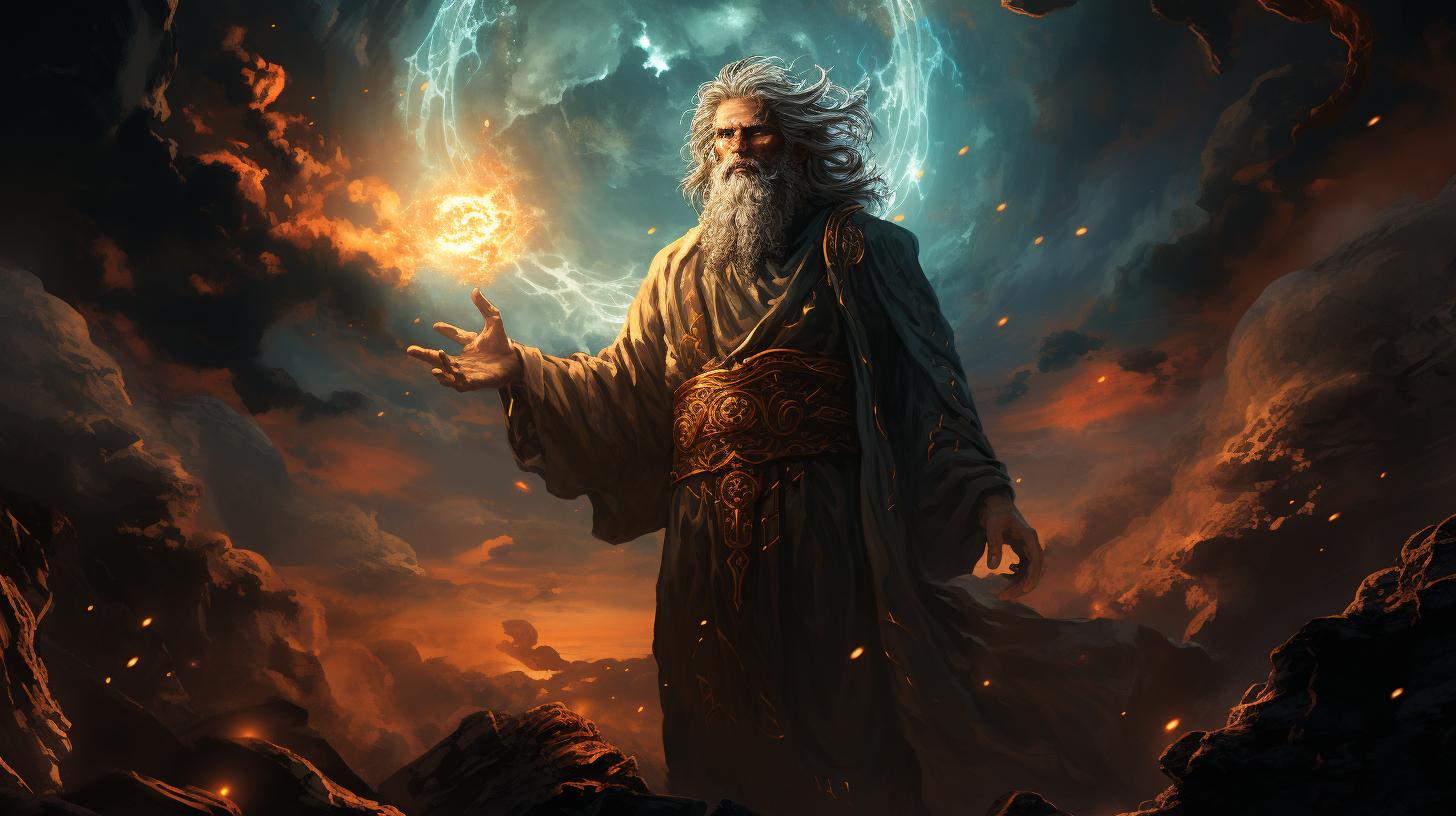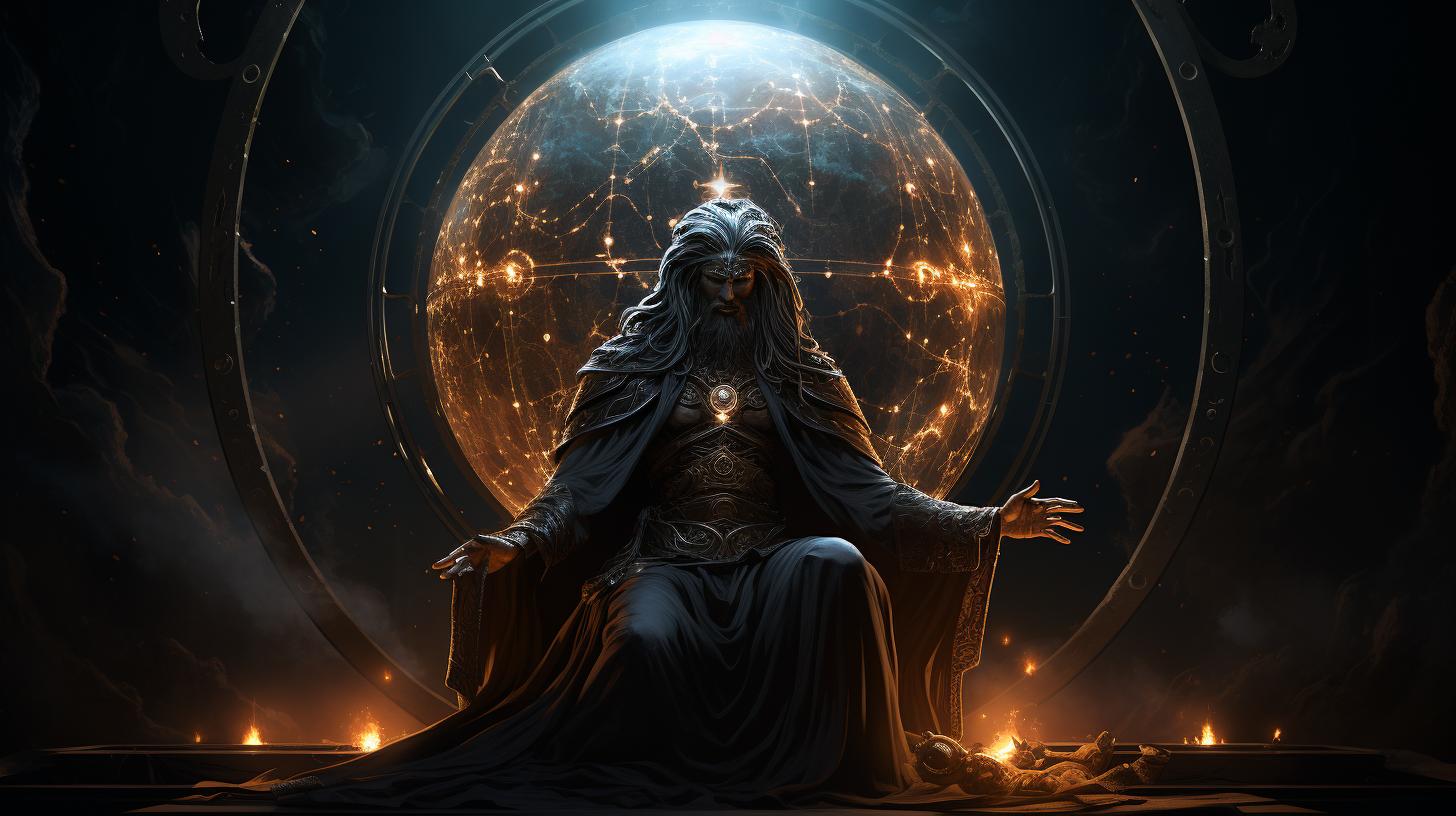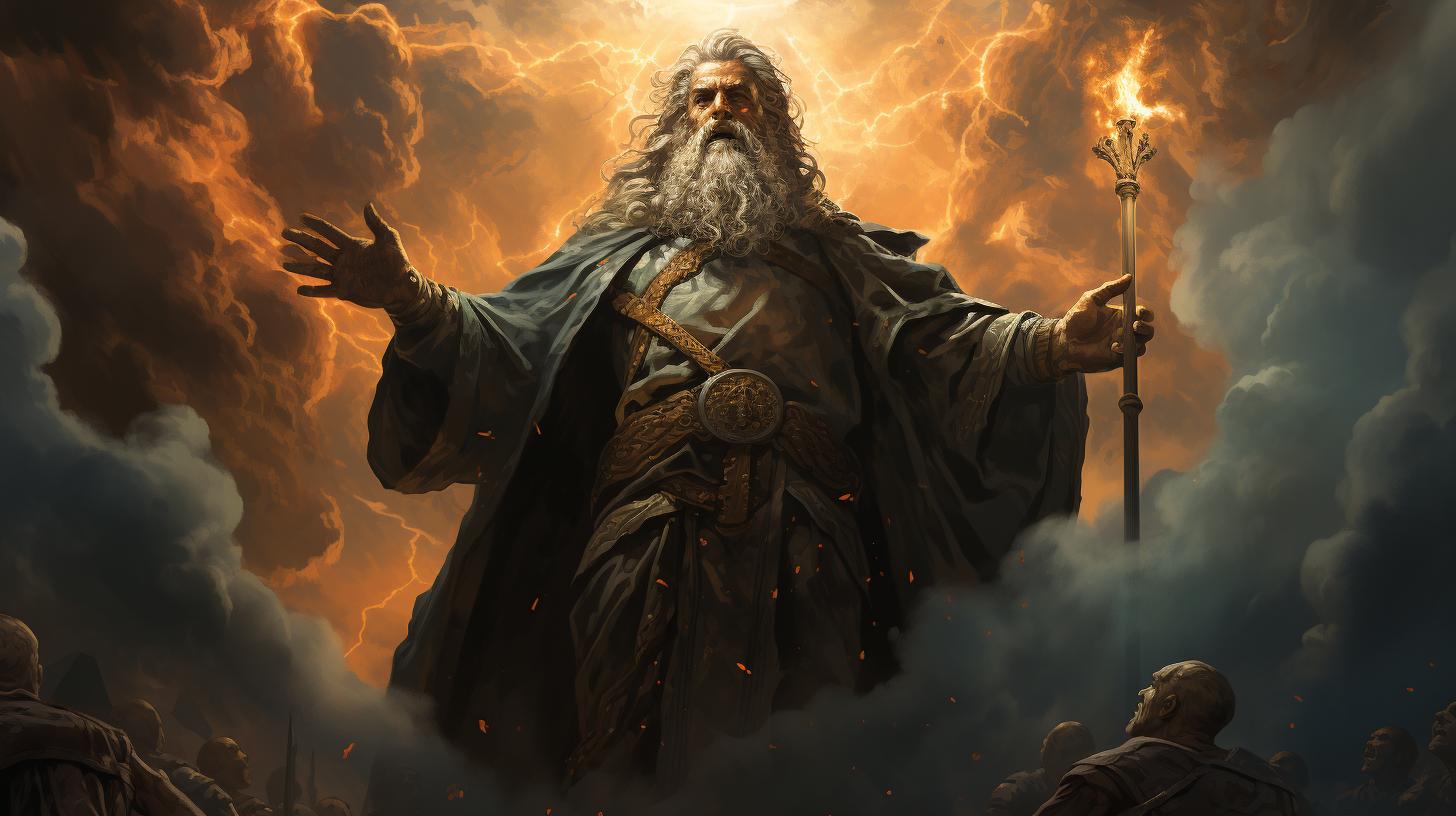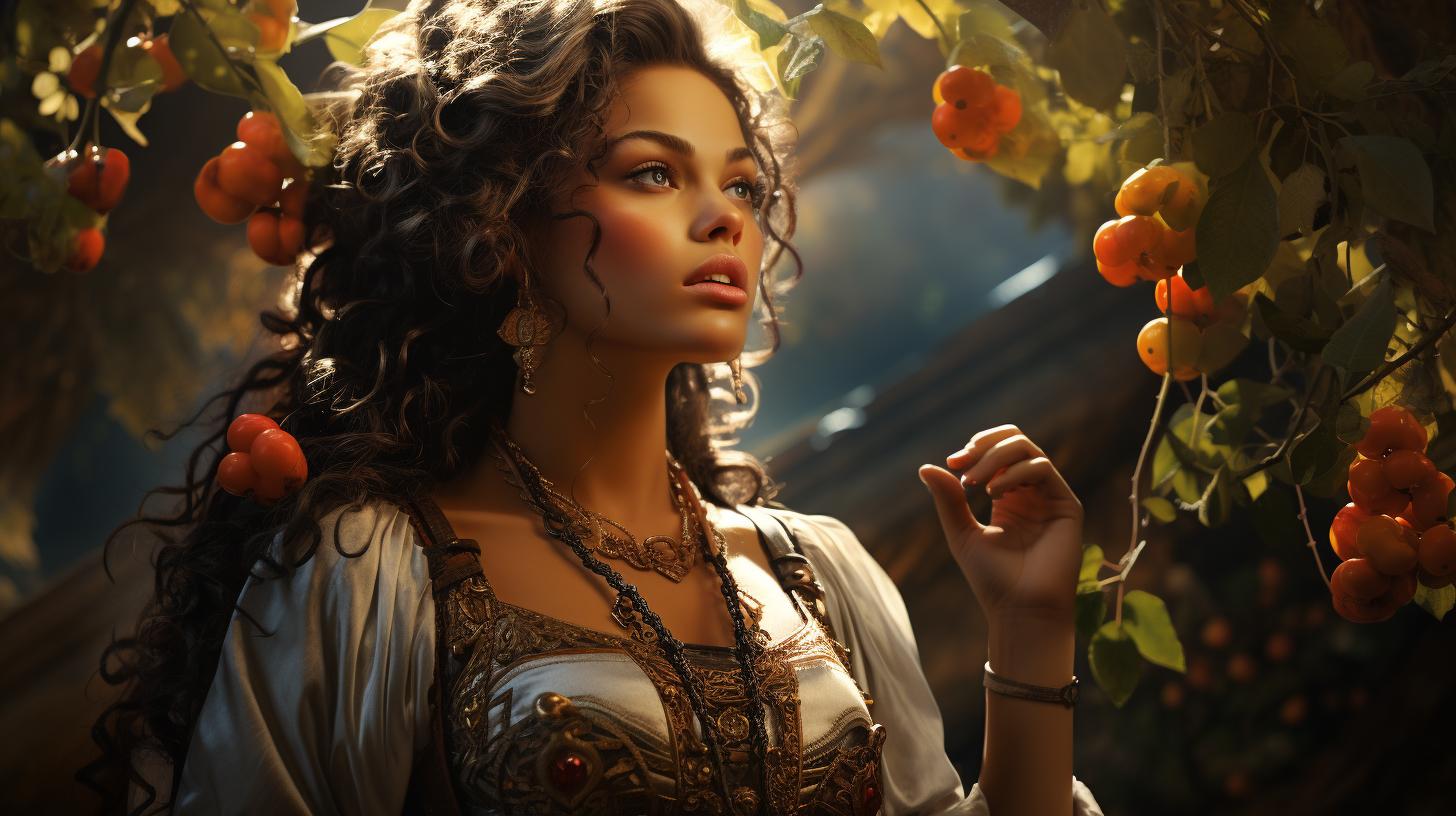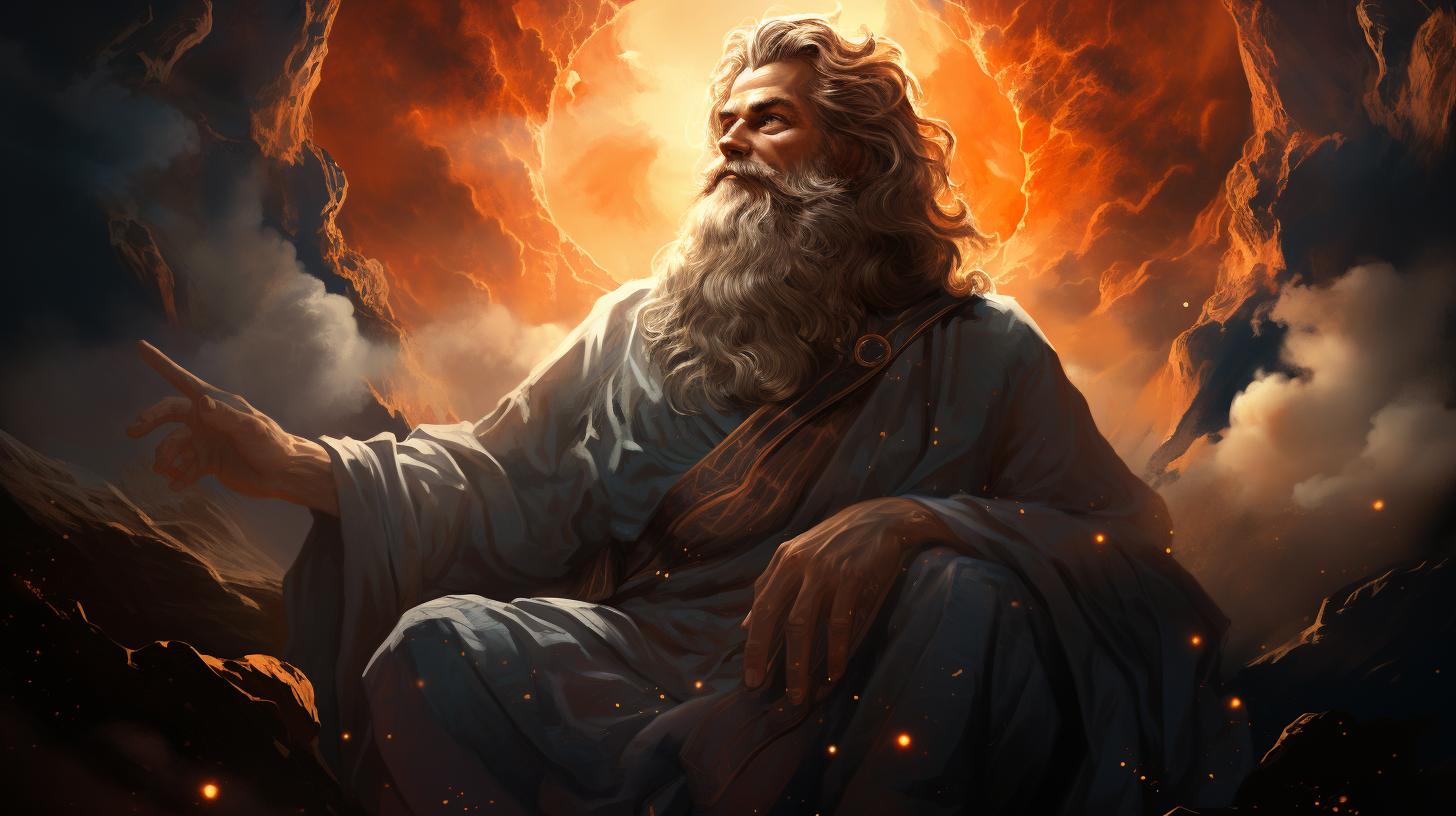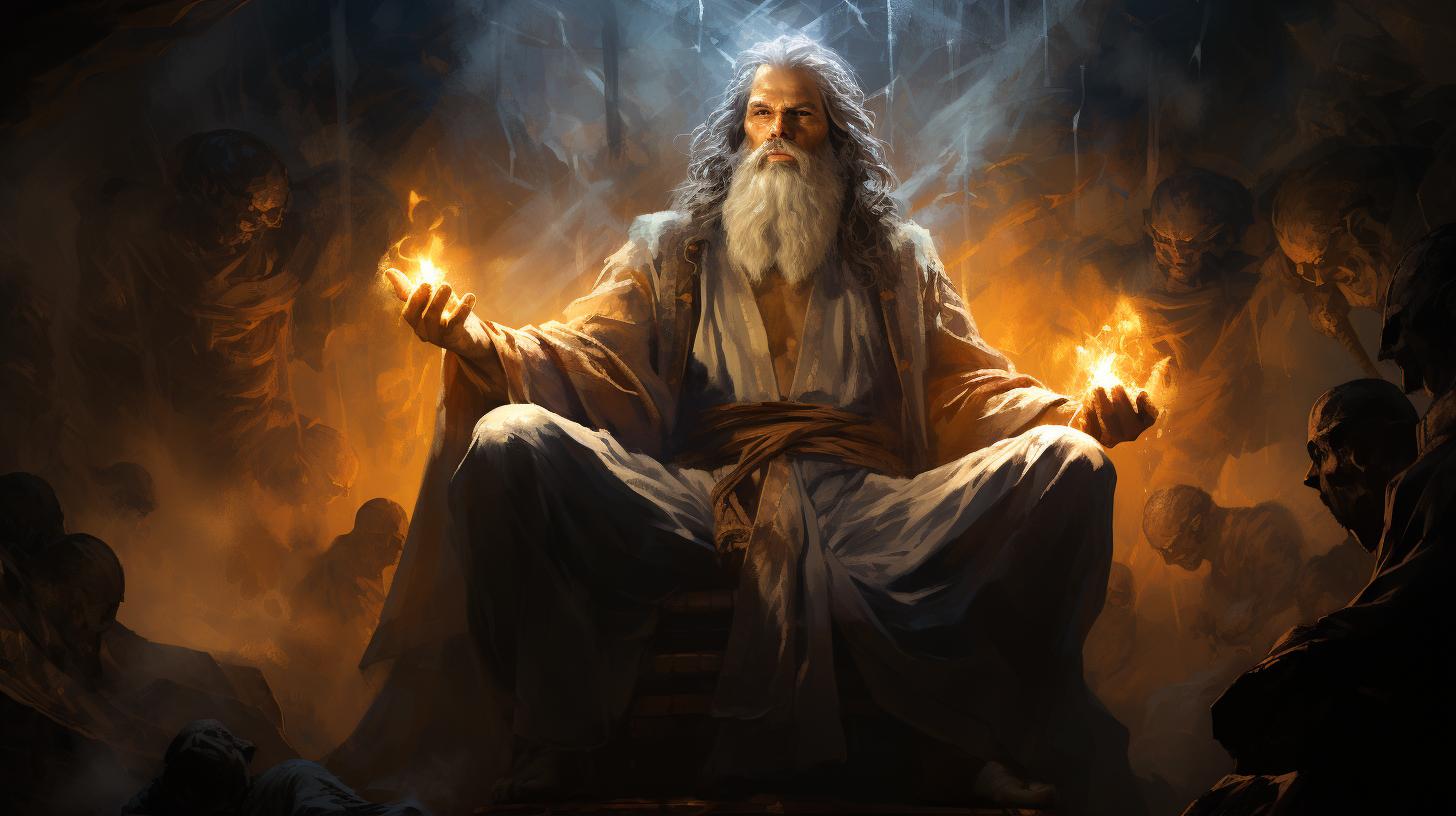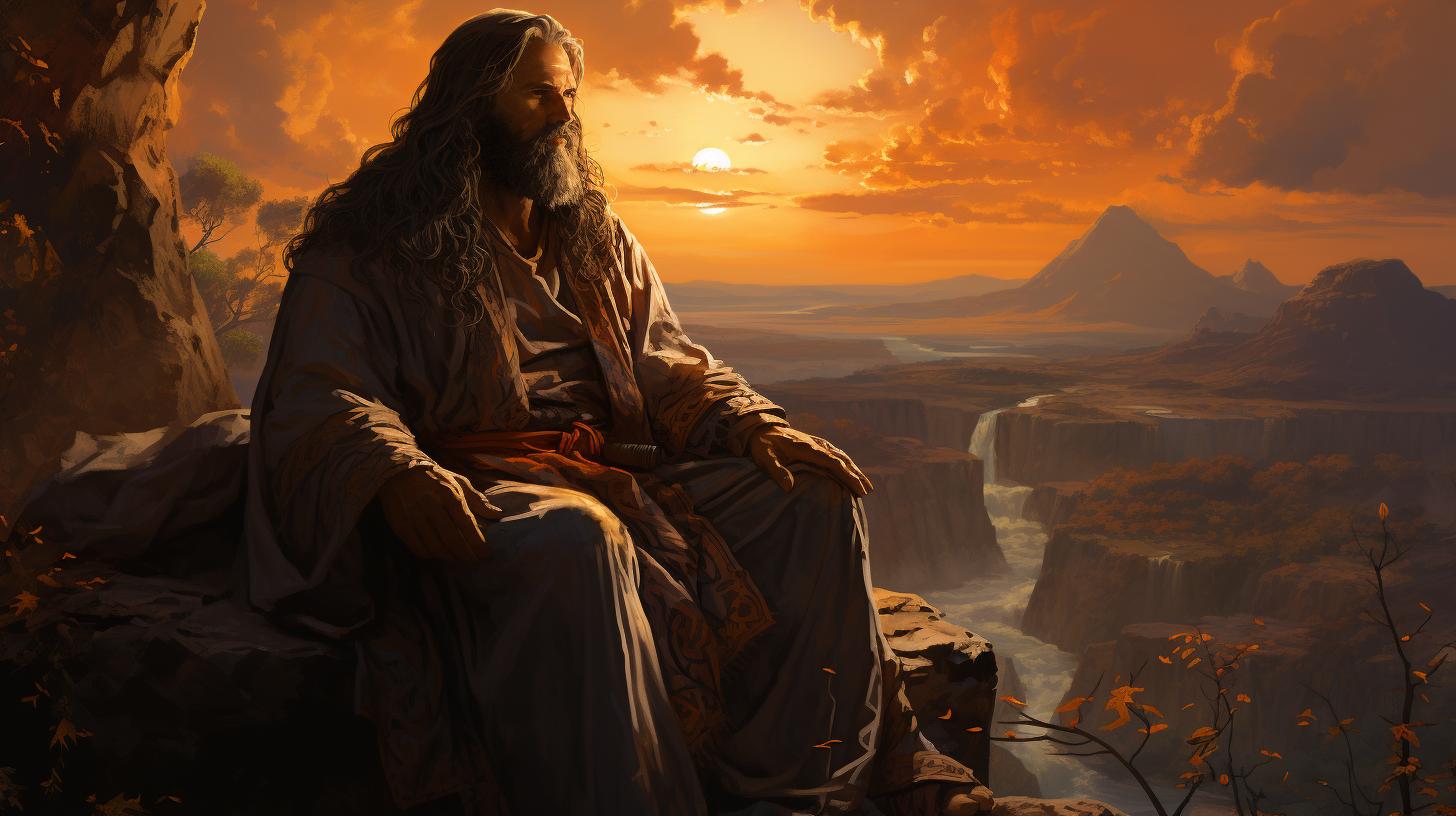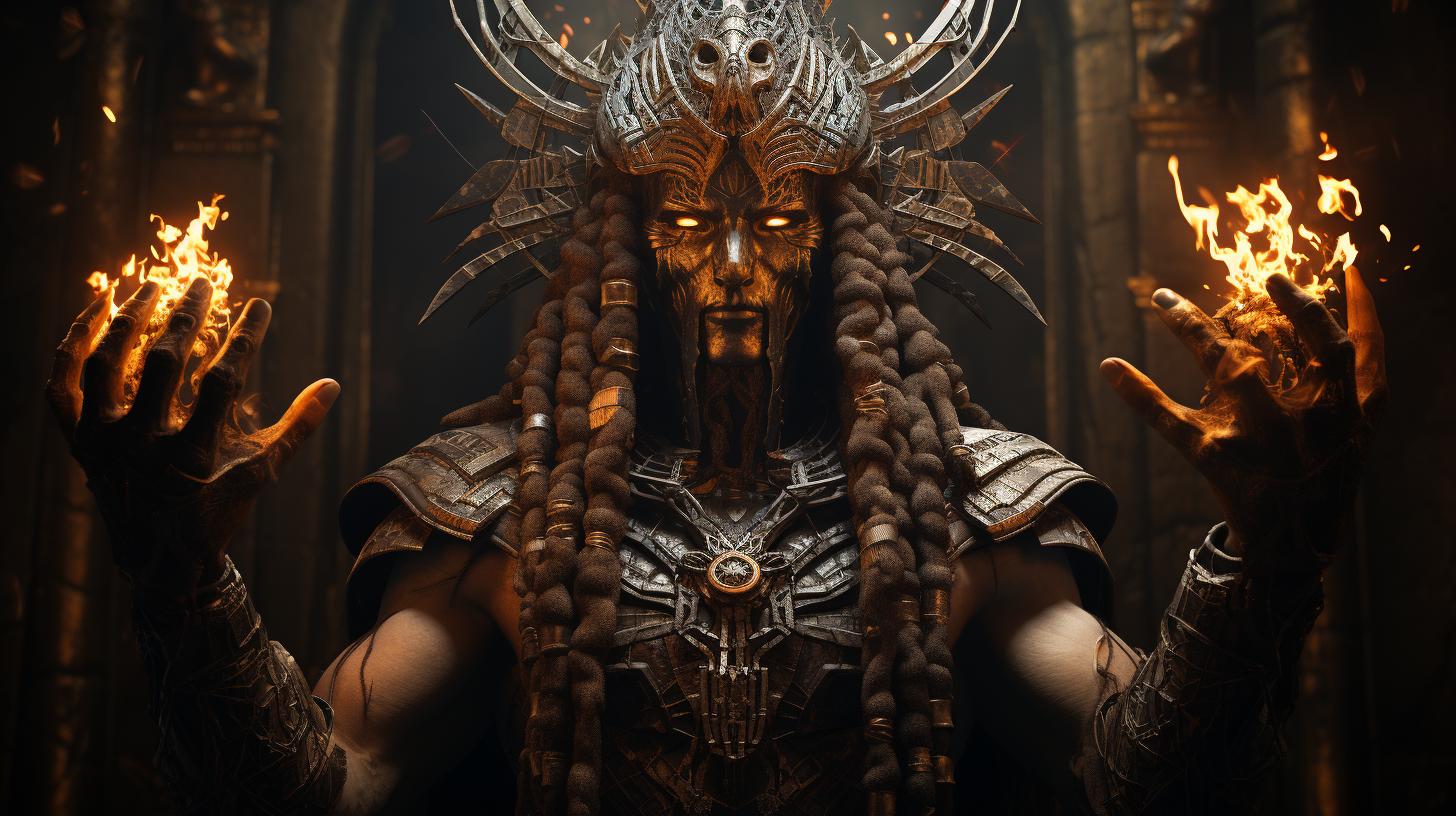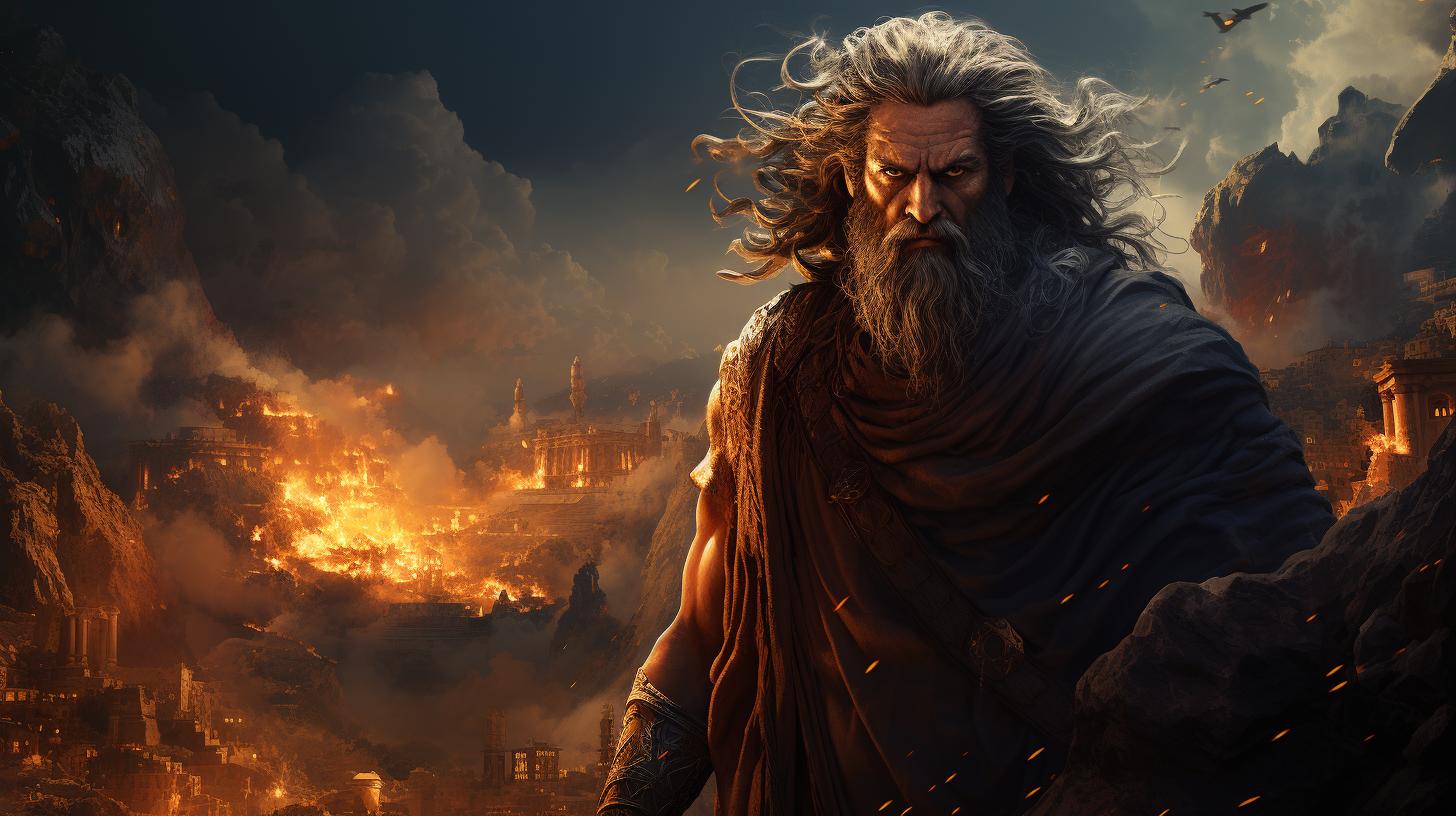‘Aglibol God: Unraveling the Mysteries of the Ancient Palmyrene Deity’
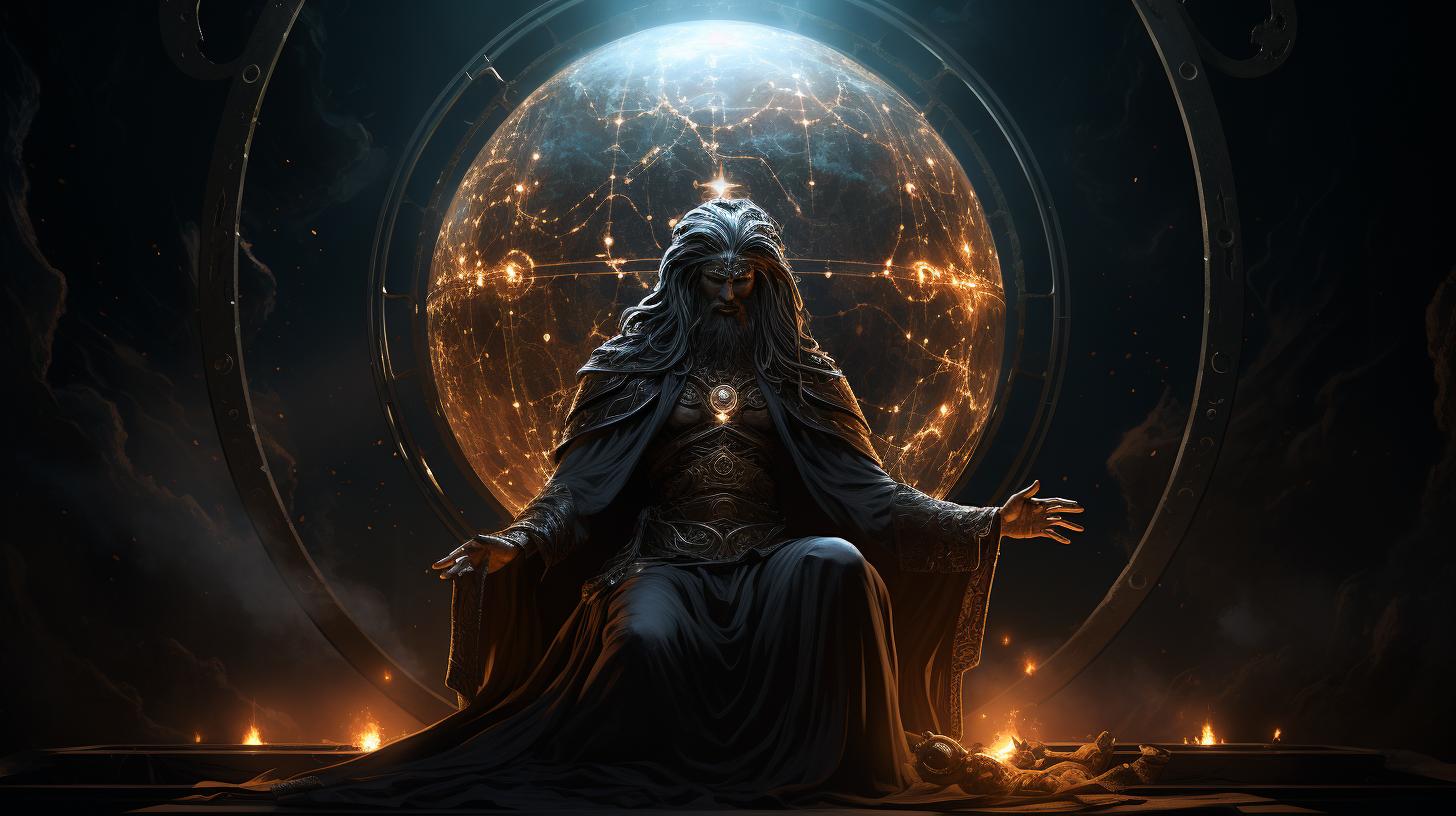
The ancient city of Palmyra in Syria housed a rich pantheon of gods, including Aglibol, the moon god, and Malakbel, the sun god. These deities played significant roles in the religious practices of Palmyrene society.
The art and inscriptions found in the Palmyrene sanctuary shed light on the worship and beliefs surrounding Aglibol and Malakbel. Influenced by Roman and Greek traditions, the legacy of Palmyrene religion continues to intrigue scholars and captivate modern audiences.
Explore this ancient world and uncover the mysteries of Aglibol god and Palmyrene mythology.
The Ancient City of Palmyra
The city of Palmyra, located in the desert of Syria, is steeped in history and known for its vibrant cultural heritage.
It flourished in ancient times as a prosperous trading hub, famed for its caravan routes that connected the East and West. Palmyra’s strategic location made it a center of great wealth and importance.
Founded in the early 2nd millennium BCE, Palmyra grew into a thriving city during the Roman era, blending influences from various civilizations. Its architecture, art, and religious practices were a fusion of Babilonian, Aramean, and Greco-Roman elements.
The city’s prosperity and cosmopolitan nature attracted people from diverse backgrounds, creating a multicultural society where Roman, Greek, Arabic, and local traditions coexisted harmoniously. Palmyra’s unique blend of cultures is evident in its art, architecture, and religious beliefs.
The ruins of Palmyra bear witness to its glorious past. The grand colonnaded street, the Temple of Bel, and the Palmyrene Funerary Tombs are just a few examples of the city’s architectural splendor.
Exploring the ancient city of Palmyra offers an opportunity to delve into the rich history of the region, unravel the mysteries of its religious practices, and gain insight into the fascinating interplay of different civilizations that shaped its identity.
The Worship of Gods in Palmyra
The ancient city of Palmyra was a center of religious devotion, where the worship of gods played a central role in the lives of its inhabitants. The diverse pantheon of Palmyrene deities reflected the city’s unique cultural blend, encompassing influences from Babilonian, Aramean, Greek, and Roman traditions.
The worship of these gods was not only a religious practice but also an integral part of Palmyrene identity and social structure.
The Pantheon of Palmyrene Deities
In Palmyra, a wide range of gods and goddesses were revered, each with their specific area of influence and individual characteristics. The pantheon included deities such as Bel, Baalshamin, Yarhibol, and Aglibol, who held significant positions in the religious hierarchy.
These gods represented different aspects of life, from fertility and prosperity to the forces of the sun and the moon. The pantheon’s complexity showcases the diversity of spiritual beliefs and practices in Palmyra.
Representation of Gods in Palmyrene Art
The religious significance of the Palmyrene deities was also expressed through art and sculpture. These representations often depicted the gods in a Greco-Roman style, combining elements from both cultures. The gods were typically shown in majestic poses, adorned with symbolic attributes and wearing attire that symbolized their authority.
These artistic portrayals not only served as devotional objects but also allowed worshippers to visually connect with the divine realm.
The artistry of Palmyrense sculpture exhibited remarkable craftsmanship, characterized by intricate details, delicate carving, and a sophisticated use of chiaroscuro.
These sculptures were not only decorative but also had a ritualistic purpose, serving as conduits for spiritual connection and communication with the divine.
The representation of gods in Palmyrene art, with their distinctive poses, clothing, and attributes, provided a visual language through which worshippers could engage with the divine realm.
This artistic expression became an essential medium for religious devotion and an integral part of Palmyrene religious practices.
Aglibol: The Moon God
Aglibol, a significant deity in the pantheon of Palmyrene gods, holds a prominent place in ancient Palmyrene religion. As the moon god, Aglibol’s role and attributes were closely intertwined with the celestial bodies and the worship of natural forces.
Aglibol’s Role and Attributes
Aglibol represented the lunar aspects of fertility, growth, and cycles of life. Often depicted as a youthful figure, Aglibol symbolized the mysterious and ever-changing nature of the moon. In Palmyrene religious beliefs, the moon was seen as a powerful source of energy and guidance, influencing the tides, agriculture, and even human emotions.
Aglibol was revered as a guardian of these lunar forces, providing protection and blessings to the Palmyrene people.
Attributes of Aglibol
Aglibol was associated with various symbols and attributes that showcased his lunar dominion. The crescent moon, often depicted alongside his representations, served as a visual indicator of his association. Additionally, Aglibol was often portrayed carrying a censer or incense burner, symbolizing purification and divine offerings.
His presence in Palmyrene art and inscriptions further solidifies his significant role in the religious practices of the ancient city.
Aglibol’s Presence in the Palmyrene Sanctuary
One of the most notable places where Aglibol was worshipped was the Palmyrene sanctuary, a sacred space dedicated to the pantheon of gods. Within this sanctuary, Aglibol’s likeness and representations were displayed, reaffirming the Palmyrene people’s devotion to the moon god.
The depictions often showcased Aglibol in his divine form, with intricate details and symbols associated with his lunar influence. The importance given to Aglibol within the sanctuary emphasizes the vital role he played in the religious and spiritual life of the Palmyrene community.
Rituals and Offerings
The worship of Aglibol involved various rituals and offerings to honor his lunar power and seek his benevolence. The Palmyrene people would conduct ceremonies during specific lunar phases, recognizing Aglibol’s influence on nature and human existence.
Offerings of incense, flowers, and symbolic items associated with the moon were presented at the sanctuary, demonstrating the connection between the Palmyrene community and their revered moon god.
In conclusion, Aglibol, the moon god of Palmyra, held a significant place within the pantheon of Palmyrene deities.
His role as a guardian of lunar forces and his presence in the Palmyrene sanctuary exemplify the important role he played in the religious and spiritual practices of the ancient city.
The attributes and rituals associated with Aglibol demonstrated the Palmyrene people’s reverence for the moon and their belief in its influential power.
Malakbel: The Sun God
Malakbel played a significant role in the religious beliefs of the Palmyrene people. As the sun god, he represented power, fertility, and vitality. His presence in Palmyrene religion influenced various aspects of daily life and cultural practices.
Importance in Palmyrene Religion
Malakbel was highly revered by the Palmyrene community due to his association with abundance and prosperity. The sun’s warmth and light were seen as blessings from Malakbel, ensuring the fertility of crops and the well-being of the people.
The importance of agriculture in Palmyra’s economy further heightened the significance of Malakbel, as he was believed to provide favorable harvests.
Furthermore, Malakbel’s influence extended beyond agriculture. His position as a primary deity in the Palmyrene pantheon made him a central figure in religious rituals and ceremonies.
The worship of Malakbel involved offerings, rituals, and prayers aimed at gaining his favor and blessings. The Palmyrene people believed that by appeasing Malakbel, they could ensure their safety, success, and overall well-being.
Connection with Aglibol
Malakbel shared a close connection with Aglibol, the moon god. Both deities represented the duality of light and darkness, day and night. This connection was further emphasized in Palmyrene art and inscriptions.
The harmony between Malakbel and Aglibol symbolized the intricate balance of cosmic forces and the cyclical nature of life.
- This connection between Malakbel and Aglibol was often depicted in Palmyrene reliefs, where the gods were shown together or in close proximity.
- Their complementary roles in the natural world were believed to strengthen one another, creating a harmonious relationship between light and darkness, sun and moon.
- The Palmyrene people saw this connection as a reflection of the interconnectedness of all things and the underlying unity of the universe.
The worship of Malakbel and Aglibol together demonstrated the Palmyrene’s profound respect for the cycles of nature and their belief in the divine presence within all aspects of life.
Unveiling the Inscriptions
The inscriptions found in Palmyra hold significant importance in understanding the religious practices and beliefs of the ancient city. These inscriptions, written in Arameo Palmyrene script, provide valuable insights into the worship of gods, including Aglibol.
Let’s delve into the significance of these inscriptions and explore various interpretations that shed light on the Palmyrene culture.
Significance of the Arameo Palmyrene Inscriptions
The Arameo Palmyrene inscriptions discovered in Palmyra serve as valuable historical artifacts, revealing details about the religious practices and rituals of the city’s inhabitants. These inscriptions were often found on the walls of temples and sanctuaries, as well as on votive offerings.
They provide essential clues about the roles and attributes associated with the deities worshipped, including Aglibol. Scholars carefully examine and decipher these inscriptions to gain a deeper understanding of the religious customs and beliefs.
Interpretations of the Inscriptions
Interpreting ancient inscriptions can be a complex task, but through careful analysis and comparison, scholars have made significant progress in understanding the meanings behind the Palmyrene inscriptions. These inscriptions often depict dedicatory messages, invocations, and descriptions of religious practices.
As we focus on the inscriptions related to Aglibol, various interpretations have emerged, shedding light on the moon god’s significance, rituals associated with worship, and the role Aglibol played within the Palmyrene pantheon.
Moreover, the context provided by these inscriptions allows researchers to piece together the historical and cultural aspects of Palmyrene society. They offer glimpses into the daily life, religious ceremonies, and even the relationships between the deities worshipped in Palmyra.
It is through the careful study of these inscriptions that we can deepen our understanding of Aglibol, his worship, and his place within the rich tapestry of Palmyrene mythology.
The Legacy of Palmyrene Religion
Influence of Roman and Greek Traditions
The religious practices in Palmyra were deeply influenced by the prominent Roman and Greek traditions of the time.
As the city flourished as a prosperous hub of trade and commerce, its citizens embraced the cultural exchange between the Palmyrene, Roman, and Greek societies. This fusion resulted in the incorporation of Greco-Roman elements into the Palmyrene religious rituals and beliefs.
The Palmyrene gods, including Aglibol, were often depicted in artwork wearing attire resembling both Greek and Roman military garments. The influence of Greek and Roman mythology can also be observed in the intricate symbolism associated with the Palmyrene deities, such as the griffin and the bull, representing fertility and power.
Palmyrene Religion in Modern Times
The ancient Palmyrene religion continues to captivate and inspire people in modern times. Despite the decline and ultimate fall of the Palmyrene civilization, the legacy of their religious practices lives on through archaeological discoveries, scholarly research, and public interest.
Today, the study of Palmyrene religion provides valuable insights into the cultural, religious, and social dynamics of the ancient world. Scholars, historians, and enthusiasts delve into the rich tapestry of Palmyrene mythology to gain a deeper understanding of the diverse beliefs and practices of this ancient society.
Furthermore, the enduring fascination with Palmyrene gods like Aglibol reflects the enduring human quest for meaning and connection with the divine. As we explore and learn about the spiritual traditions of Palmyra, we also gain a greater appreciation for the intricate tapestry of human beliefs that have shaped civilizations throughout history.











